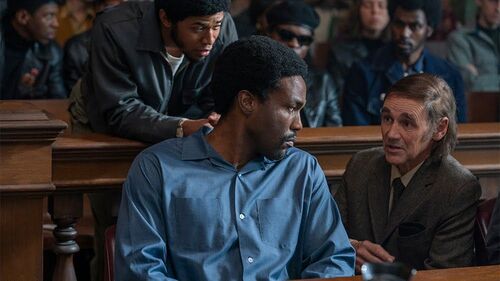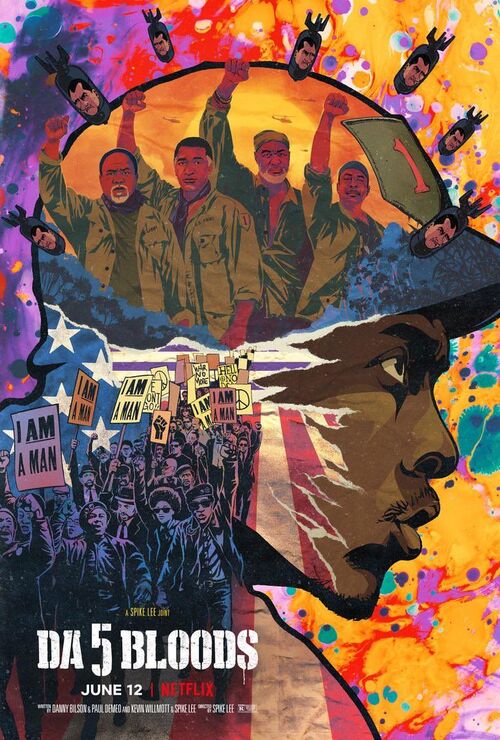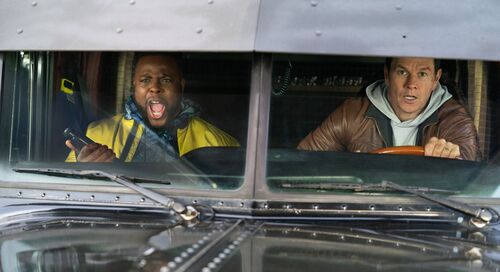
A History of Violence
 David Cronenberg says a lot of things about violence in his 2005 masterpiece, A History of Violence. Consider the brilliantly absorbing final scene that sees the central family of four sit for dinner like they probably have a million times before but only this time there is a new constant. Their varying bearings convey some insight into how Cronenberg believes the world perceives the idea of violence.
David Cronenberg says a lot of things about violence in his 2005 masterpiece, A History of Violence. Consider the brilliantly absorbing final scene that sees the central family of four sit for dinner like they probably have a million times before but only this time there is a new constant. Their varying bearings convey some insight into how Cronenberg believes the world perceives the idea of violence.
There is the character completely oblivious to the nature of violence – the graceful innocent naivety, there’s another who seems to embrace it as an inherent human tenet and then there’s the character doomed to the abyss of ambivalence, forced to come to terms with something brutally honest and abhorrent in equally measure. At the head of the table is the character embodying the layers of violence Cronemberg unravels; the tie in with identity (of course) and that inherent Darwinian ethos that resides in the human condition.
Based on the graphic novels by John Wagner and Vince Locke, A History of Violence is largely set in a small fictional Indiana town. Our central family, before Cronenberg’s resolution, sees the warm and pleasant Tom Stall (Viggo Mortensen) who runs a nice little dinner with your everyday folk as workers. He is married to Edie (Maria Bello), a lawyer, and has a teenage son, Jack (Ashton Holmes) and a young daughter, Sarah (Heidi Hayes) who we first meet screaming in fright for fear of the monsters in her wardrobe. This is as normal as it gets in a Cronenberg film.
Before we meet the Stalls, the film’s brilliant single take opening hints at something ominous on the horizon. Ill intent eventually permeates this dull rural life when two dangerous fugitives enter and try to rob Tom’s diner. They have guns but Tom is not perturbed. He takes them out in the film’s first real eruption of violence. This scene, like the subsequent scenes conveying aggression, isn’t filmed with some alluring kinetic exuberance but it evokes that final shoot out in Unforgiven in how fluid and calculated it feels. The choreography is slow with no shaky cam or quick cuts but we get the point – Tom is a bit of a badass.
After saving the day, he ends up in the local news headlines, probably nationwide too. It is clear the incident in the dinner has opened a Pandora’s Box that sees more strangers come into town, including the heavily scarred up Carl Fogarty (Ed Harris). The question is, to what end? The tone of the film also changes along with Tom’s cadence and this rubs off on his wife and son especially. Cronenberg plays beats of apprehension and paranoia till he finally shows his hand answering some critical questions that introduces an unexpected plot sensitive dimension to this narrative. I will spare you spoilery details.
The plot aside, subsequent viewings of A History of Violence present it more as a meditation on man’s relationship with violence and how ingrained it is in our identity. Think of the first ever act of cold blooded aggresion, when Cain killed Abel, and you realize man has toed the same line since. It really isn’t about why Cain killed Abel. It is about the fact that he could. Strip everything away and you see that there was a conflict, two entities came together and the fittest survived. Echoes of this ring true here, like when Jack fends off a bully at school by putting him the in the infirmary. Survivors overcome their problems with violence, Cronenberg seems to say.
This film’s resolution sees the audience transported to a darker more cynical place in time. The airy bright dreamlike aesthetic of the small Indiana town is exchanged for a certain callous noir feel in Philadelphia. Here we meet Richie Cusack (William Hurt), a gangster whom Tom has to eventually confront, in a fantastic crescendo, if he wants some peace of mind. Hurt absolutely owns the final moments of the film as an oddly fixating screen presence giving a terrific performance dripping with the kind of jet black humor that highlights Cronenberg’s ability to shift tones seamlessly.
The other core performances are not as enjoyable as Hurt’s but not wanting for heft. Mortesen and Bello do a lot of the emotional lifting and it truly is a shame I can’t get detailed given the tie in with the plot. I saw this film cold and would not dare deprive someone of the exhilarating experience of watching this character driven narrative unravel organically. As the violent side to Tom surfaces, this change (a mutation of sorts) is rammed home by the transition in Edie’s character which Bello fantastically relays so viscerally. There is a brilliant juxtaposition between two scenes of sexual intimacy between Tom and Edie; before and after the diner incident that highlights a certain awakening from delusion.
A new reality is established, defined by the awareness of the role violence plays, as something we think we abhor but something that has kept the world spinning since Cain. The 2000s saw Cronenberg reinvent himself shifting from the stories anchored in the mutation and pathology of the body horror genre to lean mean riveting dramas elevated by his deft touch. Here, he toys with our expectations for 90 entertaining and intense minutes and finally ties up affairs beautifully in a bundle of hope and despair.
-
By: Delali Adogla-Bessa/delalibessa@yahoo.com/Ghana


